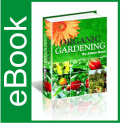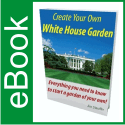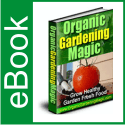How to Store Vegetable Seeds
How to Store Vegetable Seeds
Article by HL Tate
Storing seed which you got from other plants is a technique for home organic gardening. Save and keep your plant seeds for growing at a later time for when you decide to plant. Although there isn’t a guarantee that the seeds will grow from storing them, you can take the additional steps to preserve them which will allow them to grow like they would of in their own natural environment
Before you decide to begin saving your vegetable seeds, you need to clean and dry them as a way to protect the seeds from any kind of molds, mildewing or dampness. If you are taking your seeds from a natural plant, you should remove the additional matter, like the cob, shell or gel coating from tomato seeds. You can save most seeds without any extra needed work, just wipe them dry and separate them from the husk or core. If you want to grow and store your own seeds, save something that you want to enjoy growing and eating. Growing your own food is an enjoyable experience. The most common seed to save are tomato, cantelope, watermelon and pumpkin. Even if you didn’t get your seed from vegetables or fruits, storing seed that you got from the garden stores will have the same effect.
Seed storage is one the many issues that you face when doing organic home gardening because you should have useable seeds for next year – store the seeds you do not use. When setting up your storage area you want to take into consideration the temperature and moisture because you want to store them in a space which has a constant low temperature and lower levels of moisture. Any substantial levels of temperature fluctuations will lessen the amount of time your seeds will be good for. You can also use your freezer or fridge because you may not require much space. If you decide to place them in the refridgerator or freezer, the be sure you place them towards the back put away from the fan. You need a consistent temp and when the fan kicks on it will disburse colder air, the same as whenever you open up the door, hotter air may rush in. Essentially whenever you put them in these appliances, your almost inducing hibernation in the seed. If you want to store them for long term, use a freezer, shorter durations I would utilize a refridgerator. Do not forget any kind of humidity can damage them and shorten their life cycle or cause them to never germinate.
Once you store them, arrange them into small packages and place the small packages inside a larger container. Which insulates them and protects them from any fluctuations in temps or any freezing that could harm the seed. By storing them in smaller packages, it allows you to use what you want the next time you need them. You can use plastic baggies or envelopes – be sure to mark the date and type of seeds they are if you discarded the originally packing.
When its time to plant, it may be best to take the seed you want to use and put them into a different container, then into a place that is slightly warmer then the place they were originally kept a few days. This is also a good time to prepare your seed starter pots. If you had them inside the freezer, put them into the fridge – if they were in the refridgerator, put them in a cool place such as a basement or cooler room in the home. This is the most difficult part because you still want to avoid the humidity issue. Not every place is exact and its hard to judge temperatures and how the seeds will react. You just want to have them stablized and provide them a few days to thaw before you plant. Many seeds might do better after freezing or refridgerating, since it copies the normal winter season.
About the Author
HL Tate reviews products with consumer reviews. Find more ratings, products and recommendations at Store for Gardeners
Use and distribution of this article is subject to our Publisher Guidelines
whereby the original author’s information and copyright must be included.

 June 13, 2012
June 13, 2012 







